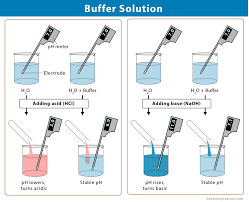Unlocking Success: The Power of Tailored Solutions
The Power of Finding the Right Solution
In today’s fast-paced world, challenges and problems are inevitable. Whether you’re a business facing operational hurdles or an individual dealing with personal dilemmas, finding the right solution is key to overcoming obstacles and achieving success.
Understanding the Problem
Before seeking a solution, it’s crucial to fully understand the problem at hand. Take the time to analyze and identify the root cause of the issue. This clarity will pave the way for effective problem-solving strategies.
The Importance of Tailored Solutions
Not all problems are created equal, and generic solutions may not always suffice. Tailored solutions that are customized to address specific needs and circumstances can yield better results. Whether it’s in business, technology, or personal life, a personalized approach can make a significant difference.
Collaboration and Innovation
Collaboration plays a vital role in finding innovative solutions. By engaging with others, sharing ideas, and leveraging collective expertise, new perspectives emerge that can lead to breakthrough solutions. Embracing creativity and thinking outside the box can spark innovation and drive progress.
The Value of Continuous Improvement
Solutions are not static; they evolve over time. Continuous improvement involves evaluating outcomes, gathering feedback, and making necessary adjustments to enhance effectiveness. By embracing a mindset of continuous learning and adaptation, you can refine your solutions for optimal results.
Conclusion
Finding the right solution is a journey that requires patience, perseverance, and strategic thinking. By understanding the problem, tailoring solutions, fostering collaboration and innovation, and embracing continuous improvement, you can navigate challenges with confidence and achieve your goals.
Understanding Solutions: Key Questions and Insights
- What is a solution?
- How do you find a solution to a problem?
- Why is finding the right solution important?
- What are common challenges in implementing solutions?
- How can tailored solutions benefit businesses?
What is a solution?
A solution refers to a means of resolving a problem or addressing a challenge effectively. It is a specific answer or method that provides a way to overcome obstacles, achieve goals, or meet needs. In various contexts, such as science, business, or personal life, solutions are tailored to fit the unique circumstances and requirements of the situation at hand. By identifying the root cause of an issue and implementing a solution that aligns with the desired outcome, individuals and organizations can navigate complexities and move closer towards success.
How do you find a solution to a problem?
Finding a solution to a problem involves a systematic approach that begins with understanding the root cause of the issue. By analyzing the problem, breaking it down into manageable parts, and considering various perspectives, one can identify potential solutions. It is essential to brainstorm ideas, evaluate their feasibility and effectiveness, and select the most suitable solution based on the desired outcome. Collaboration with others, seeking expert advice, and being open to innovative approaches can also enhance the problem-solving process. Ultimately, finding a solution requires patience, critical thinking, and a willingness to adapt and refine strategies until a successful resolution is achieved.
Why is finding the right solution important?
Finding the right solution is crucial because it directly impacts the outcome of a problem or challenge. A well-suited solution not only resolves the immediate issue but also prevents future complications and maximizes efficiency. By identifying and implementing the most appropriate solution, individuals and organizations can save time, resources, and effort while achieving desired results effectively. The right solution serves as a foundation for success, enabling continuous progress and growth in various aspects of life and business.
What are common challenges in implementing solutions?
Implementing solutions can present a variety of common challenges that organizations and individuals often face. One key challenge is resistance to change, as people may be reluctant to adopt new processes or technologies. Additionally, limited resources, such as time and budget constraints, can hinder the successful implementation of solutions. Ensuring effective communication among stakeholders and managing expectations are also critical challenges that need to be addressed. Furthermore, aligning the solution with the organization’s goals and objectives while maintaining flexibility to adapt to evolving needs can pose significant hurdles in the implementation process. Addressing these challenges proactively is essential for achieving successful outcomes when implementing solutions.
How can tailored solutions benefit businesses?
Tailored solutions can greatly benefit businesses by addressing their specific needs and challenges with precision. Unlike one-size-fits-all approaches, customized solutions are designed to align closely with the unique requirements and goals of a business. This tailored approach can enhance efficiency, streamline processes, and improve overall performance. By implementing solutions that are tailored to their operations, businesses can experience increased productivity, cost savings, and competitive advantage in the market. Additionally, personalized solutions foster innovation and growth by allowing businesses to adapt quickly to changing environments and seize new opportunities effectively.




